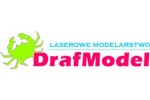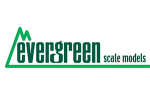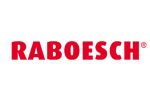One of the basic tasks in building a paper model is taping the parts. We glue them to reinforce them or if we need a specific thickness of the part, for example because of the plastic surface of the model. In both cases we do the same. We cut out the part with the appropriate addition and glue it to the prepared paper / cardboard using glue. At this sentence it is good to stop and answer two questions:
- What glue to use for the backing?
- Which paper/cardboard to glue to?
First the question of glue. The paper model is normally glued with Herkules liquid glue or other dispersion (white) glue for example for gluing wood. However, this glue contains a significant amount of water, which has a negative effect on the gluing. The painted parts readily absorb the water, causing considerable deformation of the part. A part glued in this way can stretch up to several mm! This results in complications during model building. It is therefore recommended to use a rigid glue in a tube to keep deformation to a minimum. Some modellers also use spray adhesive. In my experience, not all adhesives are of good quality and hold well. You need to try several brands and see which one suits you. Personally, I currently use Koh-I-Noor brand glue. However, there is one exception and that is for small parts (approximately 15mm and smaller). Rigid adhesives don't stick as perfectly on a small area. It is therefore advisable to use standard white glue on small parts. Due to the small size, there is no risk of deformation as with larger parts (skeleton parts, etc.).
Now let's move on to the second question - the question of paper. We can glue on any paper. It only depends on the resulting thickness of the part. It is also good to think about whether or not we will glue the glued part somewhere else. Printed cardboard, which is usually smooth and glossy, can cause problems if we find that the glue doesn't stick. So we can basically use any paper/cardboard ( we mean full cardboard, not 3VVL, 5VVL, etc.) of the thickness we need. MS MODELS models have uniform markings. The parts that need to be taped have the appropriate number of asterisks next to the numerical marking:
- * - tape the parts with paper of the same weight as the model itself (170g/m2, i.e. paper thickness approx. 0.2mm). The piece will therefore have a total thickness of 0.4mm (0.2+0.2mm)
- ** - backing the parts with 0,5mm thick cardboard. The piece will therefore have a total thickness of 0.7mm (0.5+0.2mm)
- *** - glue the parts with 1.0mm thick cardboard. The piece will therefore have a total thickness of 1.2mm (1.0+0.2mm)
After gluing the parts to the paper / cardboard, it should be allowed to dry properly on a flat surface under load. The drying time depends on the ambient conditions (temperature, humidity) and the size of the parts. The recommended time for large parts is at least half a day.
For most models it is possible to buy laser cut parts on cardboard 0,5mm and 1mm thick (sometimes even thicker). This is no different with MS Models. These parts will partially replace the work with taping. The word partially means that parts (especially skeletons) that are printed black and white on office paper (80g/m2) do not need to be taped. The parts cut off the sheet of laser cut parts and can be glued onto the model immediately. However, the exception to this is the postcard parts - coloured. In this case, the coloured part must be cut accurately, glued onto the laser cut part and left to dry under load. The marking of such parts is as follows:
- (*) - if you have laser cut parts, cut out the part and glue it to a laser cut part of the same number. Otherwise, follow the standard procedure - tape the parts with paper of the same weight as the model itself (170g/m2, i.e. paper thickness approx. 0.2mm). The piece will therefore have a total thickness of 0.4mm (0.2+0.2mm)
- (**) - if you have laser cut parts, cut out this part and glue it onto a laser cut part of the same number. Otherwise, follow the standard procedure - glue the parts with 0.5mm thick cardboard. The piece will therefore have a total thickness of 0.7mm (0.5+0.2mm)
- (***) - if you have laser cut parts, cut out this part and glue it onto a laser cut part of the same number. Otherwise, follow the standard procedure - backing the parts with 1.0mm thick cardboard. The piece will therefore have a total thickness of 1.2mm (1.0+0.2mm)
Finally, here is an example of how to properly tape parts that occupy a larger area. The same situation can also arise if we need to glue two larger parts together. As already mentioned, we avoid using liquid glue. A glue that contains a minimum of water - for example, glue in a tube - will definitely have the upper hand. Use the glue to coat the entire surface of the stiffer part (I.) to be glued (step 1). Choosing a part that is stiffer or has a greater thickness is important to avoid twisting and further deformation. If we need to be sure that the edges hold well and do not fray, we use a smaller amount of white liquid glue (step 2.). If we have glue applied wherever we need it, spread it with a skewer to a minimal layer (step 3.) and then add the second part (II.) + (step 4.). We try to glue it as correctly as possible the first time. Finally, carefully press the parts together, smooth the joint and let it dry (weight it down on a flat surface if possible).

Notice
It is important to mention a situation that may occur. In the case of laser cut parts, it may happen that the dimensions of the printed and cut part are not the same. In this case, the rule is that the laser cut part is adjusted to fit the printed part. This rule applies in general, so it is always advisable to check (compare) the laser cut parts with the dimensions of the original (printed) parts.
Layering of parts
I would like to quickly mention the layering of parts, which can be well used for small details (small boxes of a few mm, etc.). Larger weight papers can usually be efficiently divided into at least two layers of paper. This gives us the possibility to glue small parts more easily and in much better quality. The lay-up itself consists of three steps:
- Cutting out the part with the addition
- Bending a corner of the part, which causes the paper to break into layers
- Removing a suitable layer (½ the thickness of the paper) and finishing the lay-up
Once the layering is complete, work with the piece in the standard way (cutting, folding, retouching, gluing). However, the layering itself has many pitfalls and it is important to first check that the paper provides this possibility and also to practice this activity. If done incorrectly, the piece can easily tear and repair is then difficult or impossible! However, if you master this technique, you will be rewarded with a model with precisely glued details.










